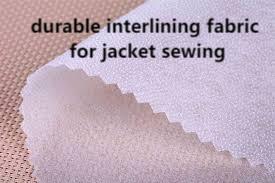In contemporary clothing production, Interlining serves as a critical layer that enhances durability, structure, and overall appearance of garments. Properly applied, interlining provides support to fabrics, ensuring they maintain shape, fit comfortably, and present a polished look. Its versatility allows designers and manufacturers to create garments that combine style with functionality, making it a staple in both fashion and technical textiles.
Enhancing Fabric Stability
This hidden layer significantly improves garment stability. It reinforces collars, cuffs, waistbands, and tailored edges, preventing fabrics from stretching or sagging. By selecting the appropriate type, manufacturers ensure garments retain their shape and aesthetic appeal throughout wear, contributing to a professional finish.
Types and Applications
Various forms of this material cater to specific garment needs. Fusible varieties bond with heat, providing efficiency for high-volume production. Sew-in options are ideal for delicate fabrics or luxury garments. Woven, nonwoven, and knit forms each offer distinct textures and flexibility, helping designers choose the perfect solution for each project.
Sustainability in Textiles
Eco-conscious production is a growing priority. Manufacturers are incorporating recycled fibers, biodegradable adhesives, and energy-efficient processes to minimize environmental impact. These sustainable practices maintain performance and quality while reducing waste, allowing brands to meet consumer expectations for responsible production.
Quality and Performance Considerations
Attention to detail is essential for achieving consistent results. Proper testing of thickness, flexibility, and bonding ensures reliability across garments. Choosing high-quality materials guarantees that finished clothing maintains its shape, durability, and overall aesthetic, providing a positive experience for both manufacturers and end users.
Future Trends in Material Innovation
The use of this layer is expanding beyond traditional apparel. Protective clothing, uniforms, upholstery, and even smart textiles are incorporating these materials to enhance function and longevity. As innovation continues, these layers will play a vital role in emerging garment technologies, supporting both performance and style in diverse applications.
In conclusion, interlining remains a foundational component in modern textile production, enhancing durability, structure, and aesthetic appeal. To learn more about its types and applications, visit https://www.interlining-factory.com/news/what-is-interlining-types-applications-and-more.html .

